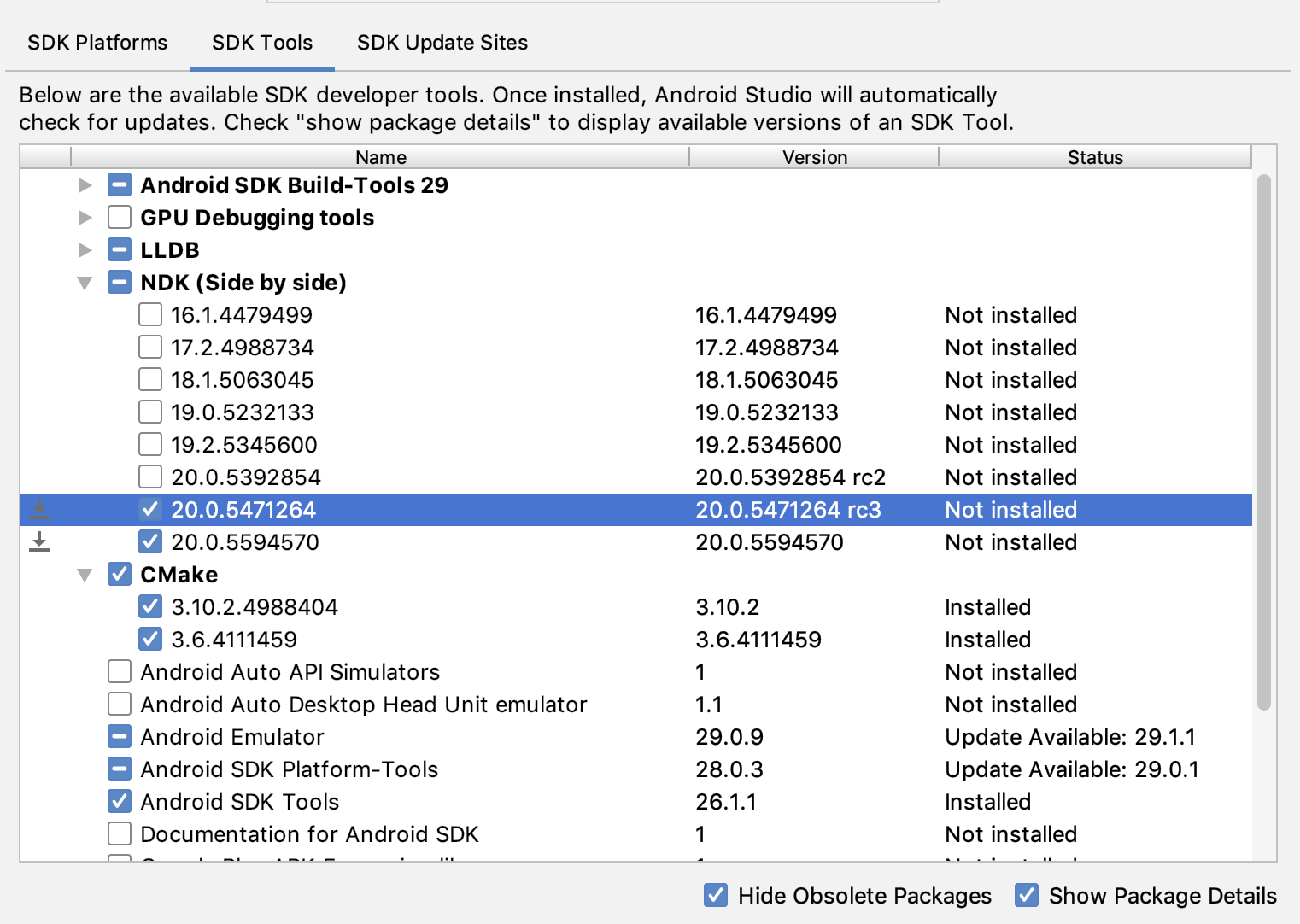
- #Android ndk directory how to
- #Android ndk directory apk
- #Android ndk directory code for android
- #Android ndk directory code
The main parts of the package templates are described in the following sections.

The build directory acts now as the packaging directory, which the application bundle is created from. The previous command copies the application's binaries and resources into the $ANDROID_BUILD_DIR. It is recommended to use Qt Creator or the Makefile created by qmake or CMake to create the application bundle.Īll the steps described here are automatically handled by the build script and the androiddeployqt deployment tool, which are run by Qt Creator by default. jar files, Java code, assets, resources and. so file of your code, as well as all Qt's dependencies needed by your application. In either case, the application bundle is generated from a specific directory structure that contains the.
#Android ndk directory apk
When using AAB, the Google Play store generates optimized APK packages for the devices issuing the download request and automatically signs them with your publisher key.įor more information on the AAB format, see the Android App Bundles. The added convenience of AAB is that you can include all target ABIs in the same bundle without increasing the size of the actual package downloaded by your users. For distribution to the Google Play store, it is recommended to use AAB instead, which has a similar layout. The difference between the two is that APK files can be deployed and executed on a device, whereas AAB is intended to be interpreted by the Google Play store and is used to generate APK files for different device architectures.įor testing the application locally, the APK format is the most appropriate, as this can be uploaded directly to the device and run. Both are ZIP files which follow a predefined directory structure. Android Application BundleĪpplications on Android can be packaged in two ways either as Application Package (APK) or Android App Bundle (AAB). Instead, it is also possible to build executable file and execute directory inside Android device.This article describes the technical steps required to deploy a Qt application to an Android device.
#Android ndk directory code
so file from C/C++ source code and use it as library. The sample source codes can be found in $NDK_PATH/samples.ĭetails are explained in Android developer ndk setup guides page.
#Android ndk directory how to
NDK folder comes with many sample source codes so that you can easily find how to write C code and JNI. I will write C:\Users\\AppData\Local\Android\android-ndk-r10e as $NDK_PATH. You can find ndk-build in C:\Users\\AppData\Local\Android\android-ndk-r10e\ndk-build.
#Android ndk directory code for android
Environment Path setting is necessary for executing “ ndk-build” command, which is used to compile C/C++ source code for Android development. The paths already written C:\Users\\AppData\Local\Android\android-ndk-r10e

In System variables category, find “Path” variable and press to add NDK folder path. In my case it is adding Variable value as,

) Step4. Set environment PATH to point NDK folder path (For example, I moved it to C:\Users\\AppData\Local\Android\ android-ndk-r10e, since there was sdk folders in C:\Users\\AppData\Local\Android\sdk. Move whole this directory to any favorite place. Move extracted folder to favorite placeĪfter Step2, you get extracted directory, something like “ android-ndk-r10e“. It will just automatically extract the files to construct NDK working directory set. Execute installerĭouble click to execute downloaded installer(.exe file in Windows case). In my case, I was working on Windows 7 64-bit OS, I chose android-ndk-r10e-windows-x86_64.exe. Visit download site here, and choose installer depending on your development OS platform. Usually Android application is developed by Java, but you can use C/C++ source code together with Android NDK (Android Native Development Kit). It provides us a opportunity to re-use/integrate existing C source code as well.īelow is summary for the steps how to start working with Android NDK.


 0 kommentar(er)
0 kommentar(er)
